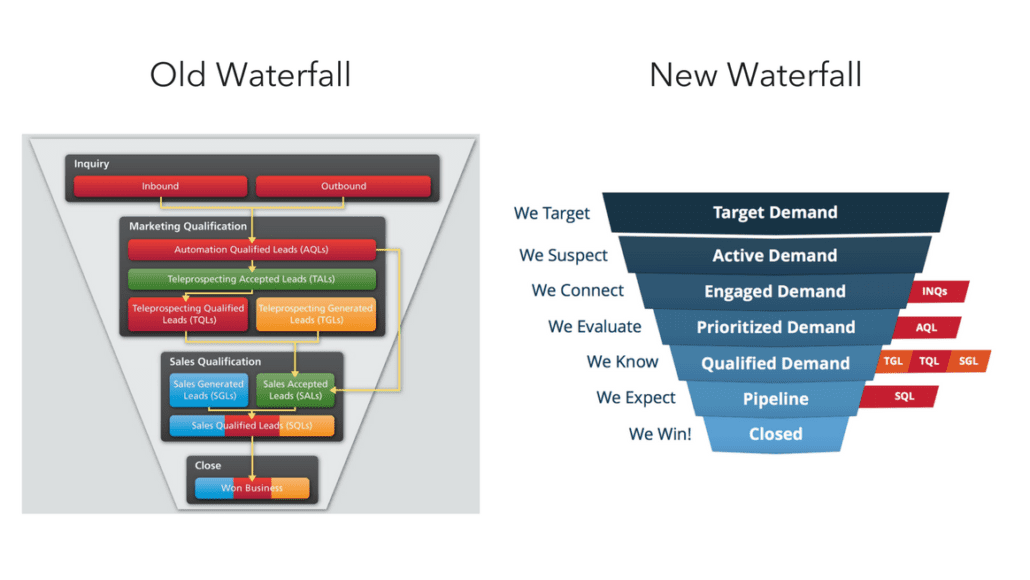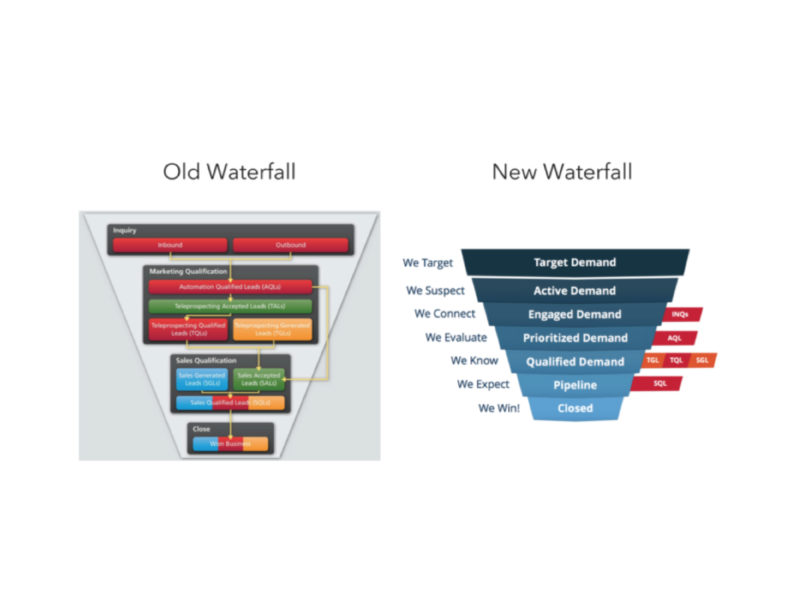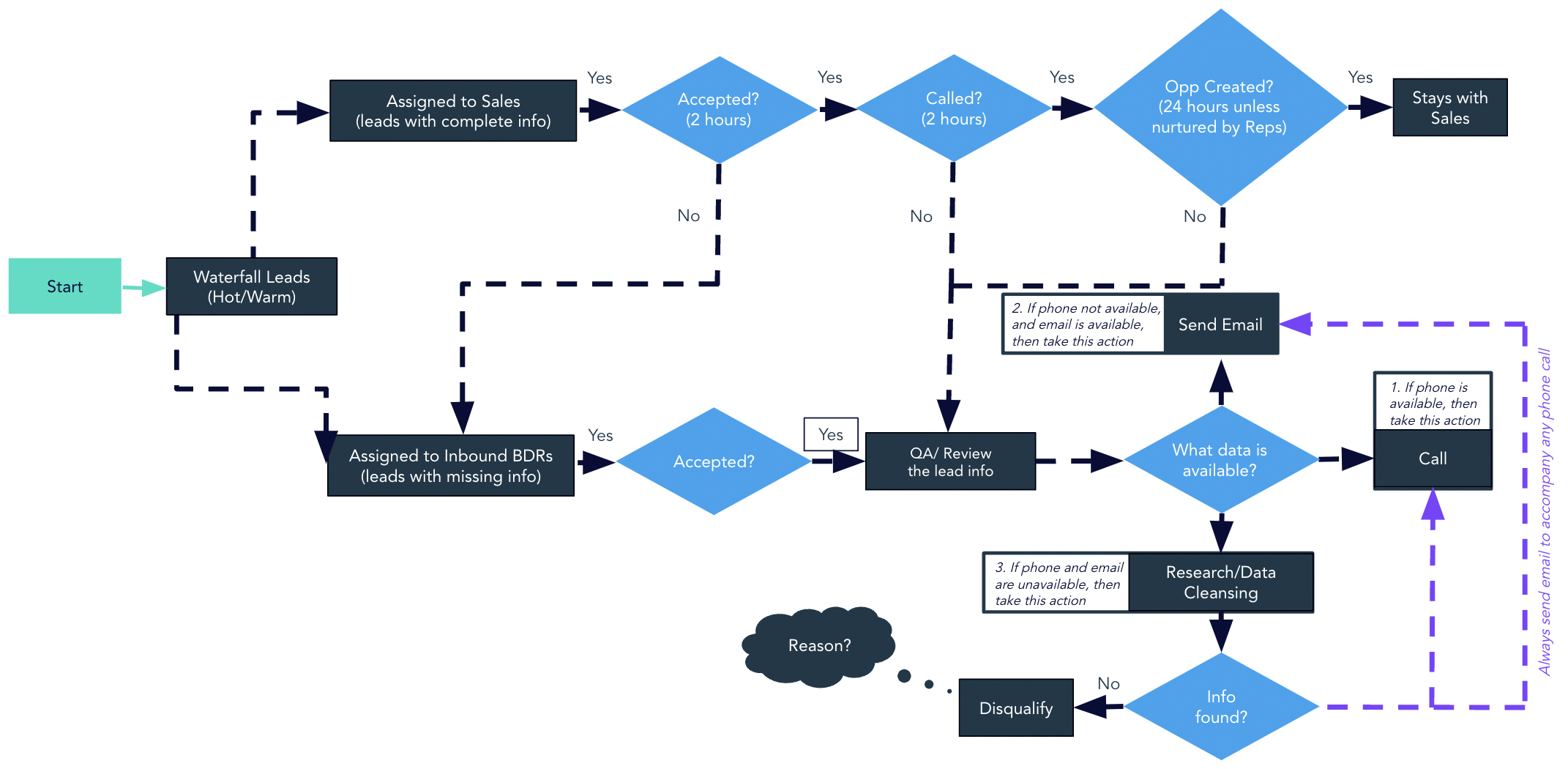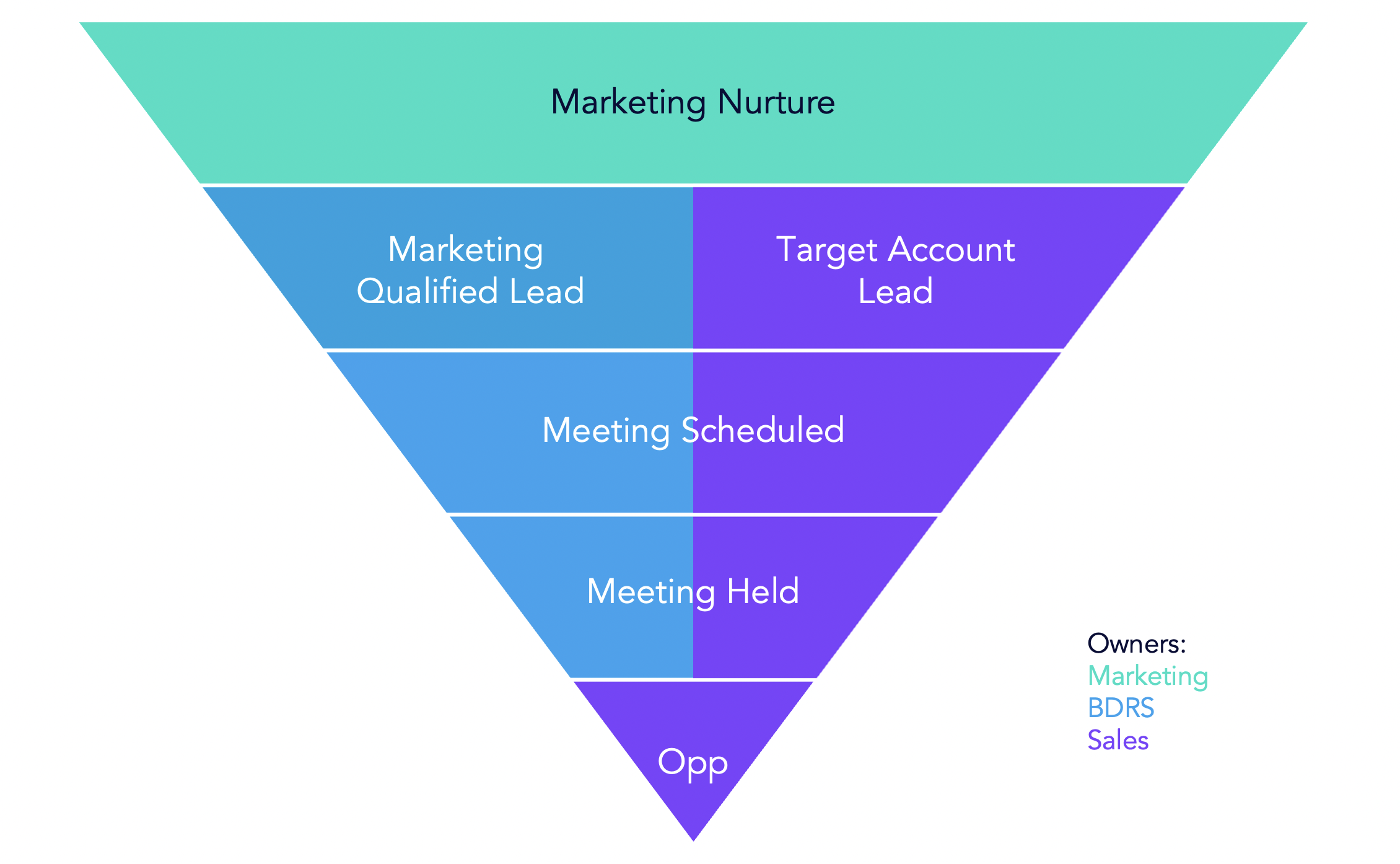Before 2008, marketing and sales were pretty much aligned. In many B2B tech companies, marketing’s role was basically a 50/50 mix of PR and sales support. With a laser-like focus on the long game—penetrating accounts and fostering relationships—enterprise reps would pop in and out in Brooks Brothers shirts, in between golf engagements and steak dinners (okay this was Boston tech—a notorious boys club and pretty conservative).
So what happened?
I’m guessing we all know the answer: technology, automation, and INBOUND marketing.
Yep, that did it.
>> Related: 3 Marketing Programs to Kickstart <<
The Rise (and Demise) of Inbound Marketing
From about 2008 on, I witnessed a noticeable shift in the relationship between marketing and sales.
The conversations were different—more technical, more confusing to people who know little about the top of the funnel, MQLs, and SQLs. Less tangible and meaningful to anyone outside of marketing.
Don’t get me wrong, I need my marketing automation. Marketo is my blanky. Literally. I feel lost and tiny without it.
And I would never want to go back: my passion is data-driven marketing and digital—the ability to target, get found, and nurture leads to sales-ready.
But when I look back on the transition of the mid-2000s, I can’t help but wonder, WTF did we do?
Did we lose focus? Did we excel at stuffing the top of the funnel with folks who would never convert—sucking time and resources—and bloating our database with garbage? Did we create too much noise?
I know that’s really harsh.
Let me temper it with this: volume has worked well for many companies. If you’re a software company targeting SharePoint admins, for example, it’s fairly easy to find your people—regardless of where they work or what industry they’re in.
In such a case, inbound marketing is critical to ensure your SharePoint people can find you (and fill out a form). The more the merrier. If they don’t have a project now, keep nurturing them and chances are your paths will cross in a few months when they do.
But what about organizations that aren’t targeting a person with a handful of possible job titles at pretty much any company in any industry?
What if your team should be talking to a few key stakeholders at companies that fit a specific profile?
Then I’m here to tell you today, volume isn’t the answer. It isn’t a smart use of your marketing budget.
If you’re going for brand awareness, fine. Do volume, do it well. If you’re going for pipeline and sales, then ALL THE NOPES.
I titled this piece The Demise of Inbound Marketing?, which I know is a little click-baity, but the rise of ABM (account-based marketing) is a clear signal that the pendulum is starting to swing back.
We’re seeing a shift from inbound marketing and volume, back to buyer awareness and budgets that support targeting key accounts. Many organizations are already making the transition to ABM or trying to figure out the right mix of volume vs. ABM activities.
Swinging Back: The Rise of ABM
Don’t get me wrong.
I’m not suggesting that embracing ABM means traveling back in time and erasing how far we’ve come in marketing sophistication.
To do either a classic leads/opps model or an ABM model means having the tech stack in place to support your programs and provide the insight to know what’s working and what’s not.
The MarTech explosion has only increased marketing’s responsibility for revenue and pipeline—and that’s a good thing. It’s given CMOs a seat at the revenue table, which was once reserved for sales leadership alone.
I’m just saying that for those of us who’ve been around, ABM feels strangely familiar—closer to the conversations we were having back in 2000.
It’s a return to serious sales and marketing alignment, a deep understanding of your key accounts and target personas, and a shared responsibility for penetrating and engaging those accounts.
It also means embracing quality over quantity (easier said than done, especially for organizations with a volume mindset), and transitioning your scoring model to support it.
It could mean a reorg of your sales team and a realignment of SDRs, BDRs, or ISRs.
For marketing teams that have already adopted the classic leads/opps model, it’s a big deal when SiriusDecisions trots out a new demand waterfall, favoring “demand units” over leads and opportunities:


The new waterfall reflects a dedication to targeting—with no mention of inbound and outbound inquiries. SiriusDecisions says “it represents a new way of thinking about demand and defining the buyers that make up that demand.”
I’d say that’s mostly true. But it’s not new.
It’s more like a return to a marketing & sales partnership—one that clearly defines goals and turns its focus back to understanding buyers and running meaningful, more personalized programs to engage them.
An old friend used to say “I’m not rich enough to buy cheap things.” It’s with that in mind that I welcome the return of quality over quantity.
Want tips, tutorials, best practices, and other cool stuff delivered to your inbox? Subscribe to the quarterly Sponge newsletter >




